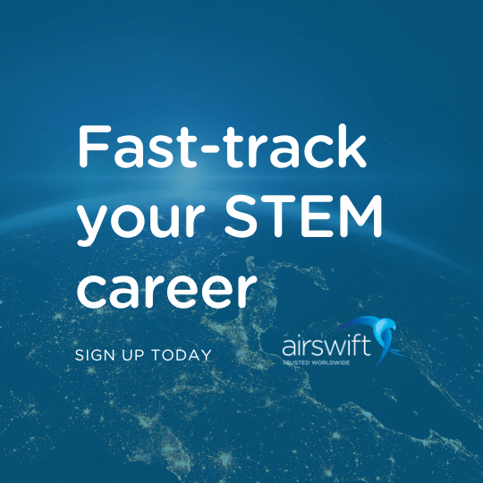
By
Rob Boyle
October 10, 2024
Updated
November 11, 2024

How can I avoid a deer collision while driving?
If you drive in remote areas where deer or other wildlife are prevalent during the day or at night, it's important to understand your surroundings. Being prepared can help prevent you from adding to these statistics.
According to the World Animal Foundation, more than 1.8 million deer-vehicle collisions occurred in between July 2022 and June 2023. If you live in an area with deer or other wildlife or plan to drive in an area prone to these types of collisions, take the necessary steps to help prevent such an accident.
What are best practices for avoiding collision with wildlife in remote areas?
- Watch for the rest of the gang. Deer are pack animals and rarely travel alone. If a deer crosses in front of you, chances are there are more nearby. Slow down and keep an eye out for more deer darting across the road.
- Drive at a safe speed. Do not speed when you are driving through deer country. You’ll still arrive if you go more slowly and you’ll have more time to avoid an animal if you spot it. Wildlife experts have recommended 55 mph as a suitable speed for wildlife zones in good weather conditions, as it provides you with some reaction time to stop. Here are the things that suffer when you travel at too great a speed:
- You can’t stop quickly enough to avoid a collision.
- The impact of a car/truck is far greater the faster you travel.
- Your ability to take evasive action is massively reduced and you’re more likely to resort to swerving instead of braking and gently responding.
- Drive defensively. Be prepared to take evasive action, which includes being able to quickly slow down, brake suddenly, or turn down blinding headlights. Drive so that you are able to stop within the space of your headlights. (Practice this in a safe area if you don’t know how fast this is for your vehicle.) Make sure your seat belt is on and check that all passengers are wearing theirs as well. A sudden lurch could have people catapulting from the car.
- Know when not to swerve. If you suddenly have a deer before your car, brake firmly. Do not swerve and leave your lane. Many accidents are not due to colliding with the deer but are the result of driving into another car or truck in the opposite lane while trying to avoid the animal. The best thing to do is drive defensively in the first place and go slowly enough where you can brake in time and won’t collide with a deer or moose.
- Timing is everything. Deer are most active at dusk and dawn: periods when your vision is most compromised. To add to their terrible timing, deer are on the move during mating season (between October and January) when you’re more likely to travel after the sun sets. Slow down and stay alert, especially after dark.
- Wear your seat belt. It may not prevent a collision, but if the inevitable happens a seat belt can reduce injuries. This is especially true if you lose control and collide with something bigger and more stationary than a deer.
- Take a moment to reflect. First, look for the road signs. The yellow diamonds with the deer on it are placed in high-traffic areas for deer. You may also spot a deer because their eyes will brightly reflect a car’s headlights, making them easier to spot.
- Stay centered. On a multi-lane road, the center lane is your safest bet for avoiding a deer collision, as long as your local traffic laws permit it. This gives deer plenty of space, and in case your vehicle does startle them, it gives you more time to react if one darts onto the road.
- Stay the course. If you see a deer, brake firmly and calmly while staying in your lane. Swerving could make you lose control of your vehicle and turn a bad situation much worse. Deer are unpredictable, and you could swerve directly into their changed path.

- Honk your horn at the deer or moose in short bursts. Only do this if the deer is far enough ahead and there are no cars around that can be disoriented by the honking. This may scare the deer away, but there’s no guarantee that it will make the deer run off the road. If you’re quite close to the deer, you may want to avoid honking at it because the deer may get confused and come closer to you.
- Diminish the impact if it is inevitable. If an accident with a deer or moose is inevitable, here are some suggestions for lessening the impact:
- Try to move toward where the animal came from. This may take you away from it and the animal is more likely to keep moving forward rather than backtracking. This will only work if there is one animal. This will not work for a pack of deer.
- Shift your line of eyesight to that spot as well - don’t look at the animal or you’ll steer that way.
- Try to skim rather than fully impact the animal. Brake firmly, angle the car/truck, and take your foot off the brake as you impact. The release of the brake will cause slight lift of the vehicle and this may be enough to stop the animal from rising into your windshield if your vehicle is tall enough.
- If you’re heading into a collision with a moose, lean toward the door pillar. In an episode of the television show Mythbusters, they tested this, and the center of the car was completely crushed in every impact, but the triangle by the door pillar was intact in each accident. No guarantees are offered. You are far better off avoiding the collision completely.
What should I do if I hit a deer or moose?
If the above plan fails (and it happens to the best drivers), you should take the following steps in the deer collision aftermath.
- Pull to the side of the road as soon as it is safe to do so.
- Turn on your hazard lights and remain in the vehicle until you are sure it is safe.
- Call emergency services if injuries are involved or the local police for property damage. Inform them if the deer is in a dangerous spot on the road so that it can be removed.
- Stay away from the deer. If it is still alive, it could be confused, injured, and dangerous if approached.
The best defense starts with the you, the driver, constantly scanning along the road. When in doubt, play it safe. Anticipate a visit from these hooved creatures, assuming that they’ll probably wander into your path at the worst possible time.
